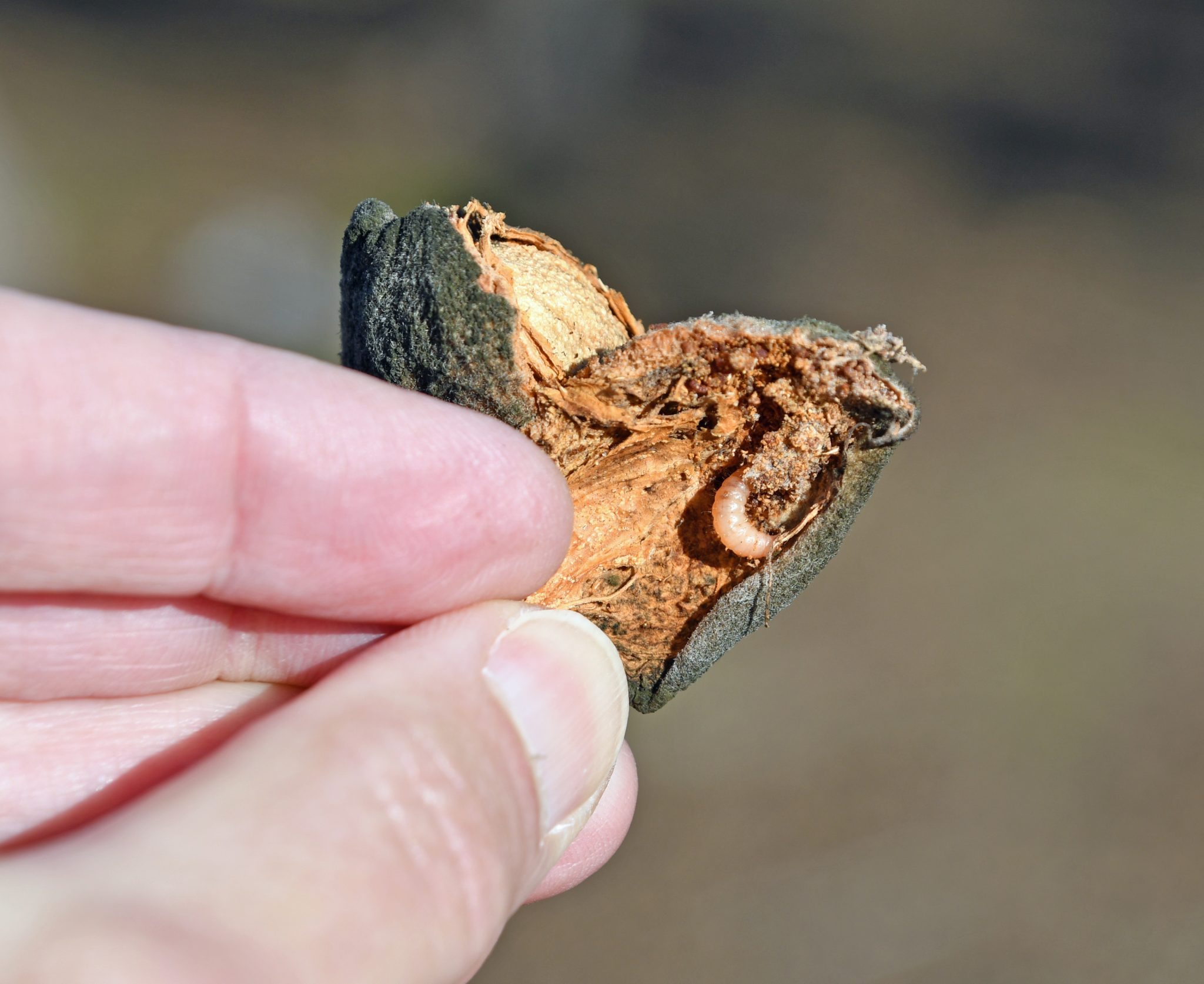
There is predictable skepticism from some tree nut growers, but a new bioinsecticide product aimed at controlling navel orangeworm comes at a time when the tree nut industry is seeking additional tools to ensure crop quality.
Peptide insecticides are the ‘new’ kid on the block for NOW control. Peptides are organic substances made from amino acids with molecules structurally like proteins, only smaller. Some plants and insects use their peptides to overcome disease or predators. Plant peptides secreted as signal molecular to trigger cell-to-cell signaling are used for plant growth and defense processes.
Peptides, including neuropeptides, peptide hormones and antimicrobial peptides assist in the regulation of insect physiology where they help coordinate complex homeostatic processes. Insects use peptides to protect themselves from predators or to capture and kill prey.
The peptide insecticide Spear-Lep, developed by Vestaron for lepidopteran control, has been modified to confirm a lack of activity against mammals or vertebrates. This product targets neuromuscular receptors in lepidopteran larvae or later instars, resulting in paralysis of the larvae that ingest it.
The company’s researchers work with a range of naturally occurring peptides which have been confirmed to have potent insecticidal properties. The genes that encode for the peptide are synthesized and placed into a yield strain as part of a proprietary fermentation production system. The product has a full registration for lepidopteran larvae in tree nuts with a four-hour reentry. It is not approved for organic use.
Marja Koivunen, product development manager in the west for Vestaron, stressed that the product is aimed at NOW control at hull split in Nonpareil almonds.
USDA-ARS Research Entomologist Joel Siegel said the peptide insecticide Spear-Lep uses two components. The peptide and Bacillus thuringiensis (Bt). Bt, a stomach poison which is used to create holes in the mid gut of the lepidopteran larvae, allows the very toxic peptide component to enter the hemolymph and kill the insect. The challenge, Siegel noted, is getting the peptideomponent into the equivalent of the bloodstream, which is the hemolymph of the insect.
David Doll, The Almond Doctor and former UCCE farm advisor, wrote in a blog about the Spear-Lep that the bioavailability of the peptide was a hurdle in early development as the active ingredient must pass through the gut membrane of the larva to come into contact with the nervous system receptors. Adding the ‘gut disruptor’ Bacillus thuringiensis to open the pores of the mid-gut membrane for the peptide to cross through solved that issue.
The need for larvae ingestion of the product caused grower skepticism of its efficacy, PCA Justin Nay said.
Barat Bisabri, an almond grower, researcher and past member of Almond Board of California’s Research and environmental Committees, has been involved in evaluation of the peptide insecticide Spear-Lep for three years and has applied the product in almond orchards in Yolo, Stanislaus and Merced counties to test efficacy. His company, Bisabri Ag Research and Consulting, has conducted a number of different trials or control of NOW in almonds.
While trials are ongoing, Bisabri said he feels it is important to develop new chemistries for control of NOW as it continues to infest tree nut orchards and cause damage.
“It appears to work,” Bisabri said. The product does have merit, but as a new product, he is cautious in recommending its use as a standalone product against high NOW populations.
“There are not many new products being developed. The ones we have, Intrepid, Diamides (Alticor, Besiege, etc.), certain pyrethroids work well, but having a different product to rotate in could help preserve their efficacy.”
A plus with the peptide insecticide is that it is compatible with IPM programs, he added.
Bisabri does not recommend using the product by itself against a heavy infestation of NOW. How it fits into a grower’s NOW control program depends on grower needs, he said. As an example, after hull split, it could be applied 10 to 14 days after an Intrepid or a Diamide application.

Cecilia Parsons
Cecilia Parsons has lived in the Central Valley community of Ducor since 1976, covering agriculture for numerous agricultural publications over the years. She has found and nurtured many wonderful and helpful contacts in the ag community, including the UCCE advisors, allowing for news coverage that focuses on the basics of food production.
She is always on the search for new ag topics that can help growers and processors in the San Joaquin Valley improve their bottom line.
In her free time, Cecilia rides her horse, Holly in ranch versatility shows and raises registered Shetland sheep which she exhibits at county and state fairs during the summer.















